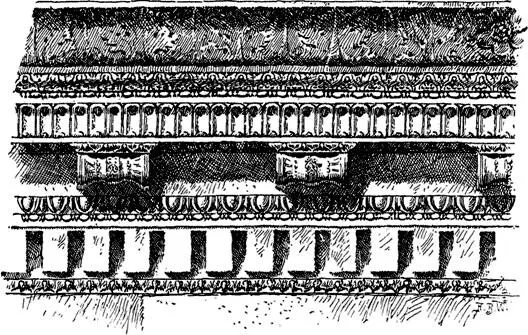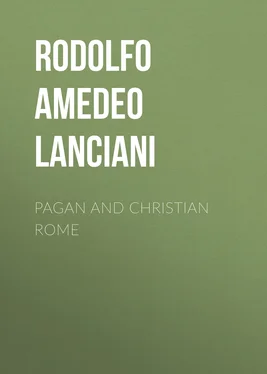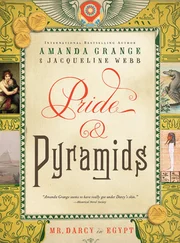Rodolfo Amedeo Lanciani - Pagan and Christian Rome
Здесь есть возможность читать онлайн «Rodolfo Amedeo Lanciani - Pagan and Christian Rome» — ознакомительный отрывок электронной книги совершенно бесплатно, а после прочтения отрывка купить полную версию. В некоторых случаях можно слушать аудио, скачать через торрент в формате fb2 и присутствует краткое содержание. Жанр: foreign_edu, История, История, на английском языке. Описание произведения, (предисловие) а так же отзывы посетителей доступны на портале библиотеки ЛибКат.
- Название:Pagan and Christian Rome
- Автор:
- Жанр:
- Год:неизвестен
- ISBN:нет данных
- Рейтинг книги:3 / 5. Голосов: 1
-
Избранное:Добавить в избранное
- Отзывы:
-
Ваша оценка:
- 60
- 1
- 2
- 3
- 4
- 5
Pagan and Christian Rome: краткое содержание, описание и аннотация
Предлагаем к чтению аннотацию, описание, краткое содержание или предисловие (зависит от того, что написал сам автор книги «Pagan and Christian Rome»). Если вы не нашли необходимую информацию о книге — напишите в комментариях, мы постараемся отыскать её.
Pagan and Christian Rome — читать онлайн ознакомительный отрывок
Ниже представлен текст книги, разбитый по страницам. Система сохранения места последней прочитанной страницы, позволяет с удобством читать онлайн бесплатно книгу «Pagan and Christian Rome», без необходимости каждый раз заново искать на чём Вы остановились. Поставьте закладку, и сможете в любой момент перейти на страницу, на которой закончили чтение.
Интервал:
Закладка:
The ancients celebrated, in the month of May, a feast called rosaria , in which sepulchres were profusely decorated with the favorite flower of the season. Roses were also used on occasions of public rejoicing. A Greek inscription, discovered by Fränkel at Pergamon, mentions, among the honors shown to the emperor Hadrian, the Rhodismos , which is interpreted as a scattering of roses. Traces of the custom are found in more recent times. In the Illyrian peninsula, and on the banks of the Danube, the country people, still feeling the influence of Roman civilization, celebrated feasts of flowers in spring and summer, under the name of rousalia . In the sixth century, when the Slavs were vacillating between the influence of the past and the present, the celebration of the Pentecost was mixed up with that of the half-pagan, half-barbarous rousalia . Southern Russians believe in supernatural female beings, called Rusalky , who bring prosperity to the fields and forests, which they have inhabited as flowers.
The early Christians decorated the sepulchres of martyrs and confessors, on the anniversary of their interment, with roses, violets, amaranths, and evergreens; and they celebrated the rosationes on the name-days of churches and sanctuaries. Wreaths and crowns of roses are often engraved on tombstones, hanging from the bills of mystic doves. The symbol refers more to the joys of the just in the future life than to the fleeting pleasures of the earth. The Acts of Perpetua relate a legend on this subject; that Saturus had a vision in the dungeon in which he was awaiting his martyrdom, in which he saw himself transported with Perpetua to a heavenly garden, fragrant with roses, and turning to his fair companion, he exclaimed: "Here we are in possession of that which our Lord promised!"
Roses and other flowers are painted on the walls of historical cubiculi. In a fresco of the crypts of Lucina, in the Catacombs of Callixtus, are painted birds, symbolizing souls who have been separated from their bodies, and are playing in fields of roses around the Tree of Life. As the word Paradeisos signifies a garden, so its mystic representation always takes the form of a delightful field of flowers and fruit. Dante gives to the seat of the blessed the shape of a fair rose, inside of which a crowd of angels with golden wings descend and return to the Lord:—
"Nel gran fior discendeva, che s'adorna
Di tante foglie: e quindi risaliva,
Là dove lo suo amor sempre soggiorna." 33
Possibly it is from this allegory of paradise that the rite of the "golden rose" which the Pope blesses on Quadragesima Sunday is derived. The ceremony is very ancient, although the first mention of it appears only in the life of Leo IX. (1049-1055); and I may mention, as a curious coincidence, that the kings and queens of Navarre, their sons, and the dukes and peers of the realm, were bound to offer roses to the Parliament at the return of spring.
Roses played such an important part in church ceremonies that we find a fundus rosarius given as a present by Constantine to Pope Mark. The rosaria outlived the suppression of pagan superstitions, and by and by assumed its Christian form in the feast of Pentecost, which falls in the month of May. In that day roses were thrown from the roofs of churches on the worshipers below. The Pentecost is still called by the Italians Pasqua rosa .
CHAPTER II.
PAGAN SHRINES AND TEMPLES
Ancient temples as galleries of art.—The adornment of statues with jewelry, etc.—Offerings and sacrifices by individuals.—Stores of ex-votos found in the favissæ or vaults of temples.—Instances of these brought to light within recent years.—Remarkable wealth of one at Veii.—The altars of ancient Rome.—The ara maxima Herculis .—The Roma Quadrata .—The altar of Aius Locutius.—That of Dis and Proserpina.—Its connection with the Sæcular Games.—The discovery of the inscription describing these, in 1890.—The ara pacis Augustæ .—The ara incendii Neroniani .—Temples excavated in my time.—That of Jupiter Capitolinus.—History of its ruins.—The Capitol as a place for posting official announcements.—The Temple of Isis and Serapis.—The number of sculptures discovered on its site.—The Temple of Neptune.—Its remains in the Piazza di Pietra.—The Temple of Augustus.—The Sacellum Sanci .
Ancient guide-books of Rome, published in the middle of the fourth century, 34mention four hundred and twenty-four temples, three hundred and four shrines, eighty statues of gods, of precious metal, sixty-four of ivory, and three thousand seven hundred and eighty-five miscellaneous bronze statues. The number of marble statues is not given. It has been said, however, that Rome had two populations of equal size, one alive, and one of marble.
I have had the opportunity of witnessing or conducting the discovery of several temples, altars, shrines, and bronze statues. The number of marble statues and busts discovered in the last twenty-five years, either in Rome or the Campagna, may be stated at one thousand.
Before beginning the description of these beautiful monuments, I must allude to some details concerning the management and organization of ancient places of worship, upon which recent discoveries have thrown a considerable, and in some cases, unexpected light.
Roman temples, like the churches of the present day, were used not only as places of worship, but as galleries of pictures, museums of statuary, and "cabinets" of precious objects. In chapter v. of "Ancient Rome," I have given the catalogue of the works of art displayed in the temple of Apollo on the Palatine. The list includes: The Apollo and Artemis driving a quadriga, by Lysias; fifty statues of the Danaids; fifty of the sons of Egypt; the Herakles of Lysippos; Augustus with the attributes of Apollo (a bronze statue fifty feet high); the pediment of the temple, by Bupalos and Anthermos; statues of Apollo, by Skopas; Leto, by Kephisodotos, son of Praxiteles; Artemis, by Timotheos; and the nine Muses; also a chandelier, formerly dedicated by Alexander the Great at Kyme; medallions of eminent men; a collection of gold plate; another of gems and intaglios; ivory carvings; specimens of palæography; and two libraries.

Entablature of the Temple of Concord.
The Temple of Apollo was by no means the only sacred museum of ancient Rome; there were scores of them, beginning with the Temple of Concord, so emphatically praised by Pliny. This temple, built by Camillus, at the foot of the Capitol, and restored by Tiberius and Septimius Severus, was still standing at the time of Pope Hadrian I. (772-795), when the inscription on its front was copied for the last time by the Einsiedlensis . It was razed to the ground towards 1450. "When I made my first visit to Rome," says Poggio Bracciolini, "I saw the Temple of Concord almost intact ( ædem fere integram ), built of white marble. Since then the Romans have demolished it, and turned the structure into a lime-kiln." The platform of the temple and a few fragments of its architectural decorations were discovered in 1817. The reader may appreciate the grace of these decorations, from a fragment of the entablature now in the portico of the Tabularium, and one of the capitals of the cella, now in the Palazzo dei Conservatori. The cella contained one central and ten side niches, in which eleven masterpieces of Greek chisels were placed, namely, the Apollo and Hera, by Baton; Leto nursing Apollo and Artemis, by Euphranor; Asklepios and Hygieia, by Nikeratos; Ares and Hermes, by Piston; and Zeus, Athena, and Demeter, by Sthennis. The name of the sculptor of the Concordia in the apse is not known. Pliny speaks also of a picture by Theodoros, representing Cassandra; of four elephants, cut in obsidian, a miracle of skill and labor, and of a collection of precious stones, among which was the sardonyx set in the legendary ring of Polykrates of Samos. Most of these treasures had been offered to the goddess by Augustus, moved by the liberality which Julius Cæsar had shown towards his ancestral goddess, Venus Genetrix. We know from Pliny, xxxv. 9, that Cæsar was the first to give due honor to paintings, by exhibiting them in his Forum Julium. He gave about $72,000 (eighty talents), for two works of Timomachos, representing Medea and Ajax. At the base of the Temple of Venus Genetrix he placed his own equestrian statue, the horse of which, modelled by Lysippos, had once supported the figure of Alexander the Great. The statue of Venus was the work of Arkesilaos, and her breast was covered with strings of British pearls. Pliny (xxxvii. 5), after mentioning the collection of gems made by Scaurus, and another made by Mithradates, which Pompey the Great had offered to Jupiter Capitolinus, adds: "These examples were surpassed by Cæsar the dictator, who offered to Venus Genetrix six collections of cameos and intaglios."
Читать дальшеИнтервал:
Закладка:
Похожие книги на «Pagan and Christian Rome»
Представляем Вашему вниманию похожие книги на «Pagan and Christian Rome» списком для выбора. Мы отобрали схожую по названию и смыслу литературу в надежде предоставить читателям больше вариантов отыскать новые, интересные, ещё непрочитанные произведения.
Обсуждение, отзывы о книге «Pagan and Christian Rome» и просто собственные мнения читателей. Оставьте ваши комментарии, напишите, что Вы думаете о произведении, его смысле или главных героях. Укажите что конкретно понравилось, а что нет, и почему Вы так считаете.












